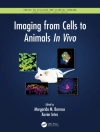It is well-known that the most common and largely used assistive technology among the visually impaired community is the white cane. Many technologies have been proposed as alternative assistive devices to improve the autonomous mobility of people affected by visual diseases. Nevertheless, whatever is the physical quantity used by these active assistive technologies – mainly ultrasonic or optical sensors – they present many limitations and none of them adequately meets the international guidelines defined for the electronic travel aids and the specific requests coming from the visually impaired community. The first chapter of this book aims to provide an overview of the existing travel aids for people affected by visual diseases, discussing pros and cons of available technologies. The aim of the next chapter is to convince the reader that solutions based on mobile visual aid systems will answer a critical societal challenge. Chapter Three explores the use of electromagnetic technology in support of visually impaired athlete runners. Chapter Four describes the present state of mobile technologies development taking into consideration the point of view of visually impaired people. Finally, the goal of the concluding chapter is to relate how the audio-description has been produced as a communication accessibility resource.
Judy Estrada
Visually Impaired [PDF ebook]
Assistive Technologies, Challenges and Coping Strategies
Visually Impaired [PDF ebook]
Assistive Technologies, Challenges and Coping Strategies
Beli ebook ini dan dapatkan 1 lagi GRATIS!
Format PDF ● Halaman 171 ● ISBN 9781634843720 ● Editor Judy Estrada ● Penerbit Nova Science Publishers ● Diterbitkan 2016 ● Diunduh 3 kali ● Mata uang EUR ● ID 7229211 ● Perlindungan salinan Adobe DRM
Membutuhkan pembaca ebook yang mampu DRM












